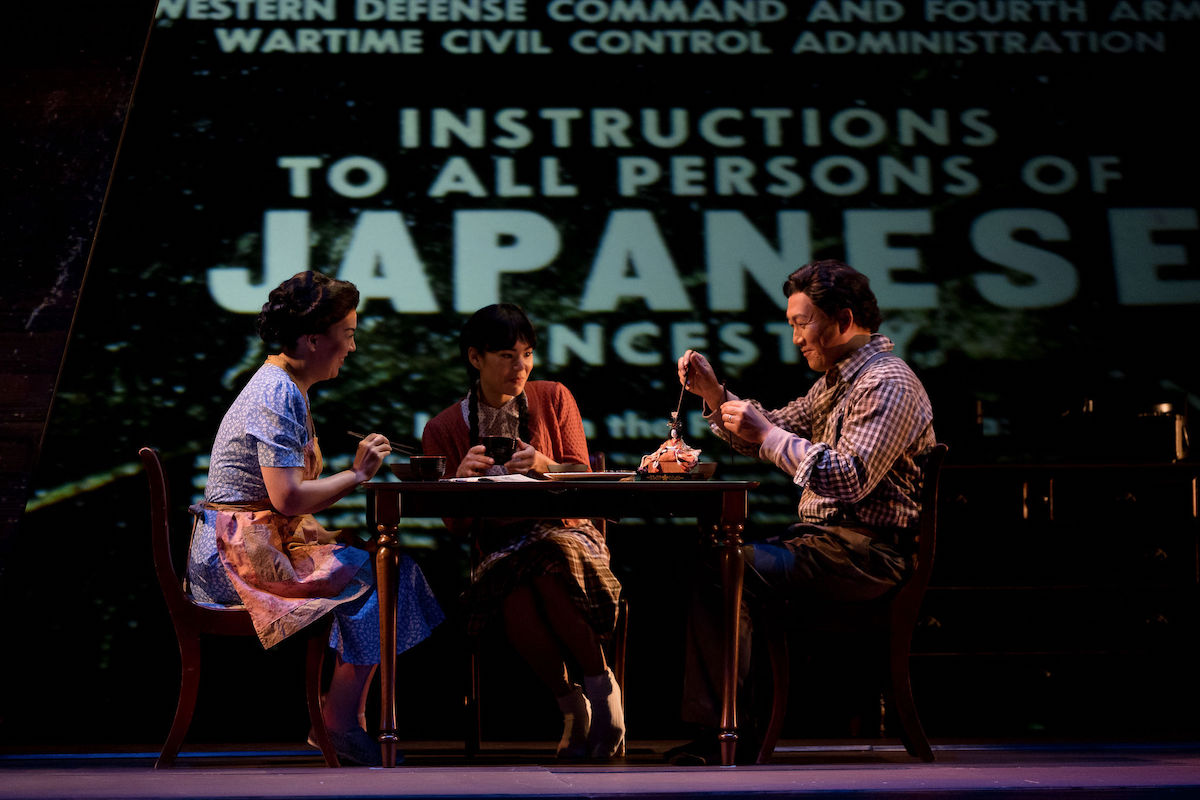A House Is Not a Home
'An American Dream,' Opera Santa Barbara’s Latest Production, Deals with Large Subjects in a Minimal Frame

An American Dream, the one-act chamber opera beautifully presented by Opera Santa Barbara (OSB) at the Lobero last week, serves as a prime example of the ability of carefully wrought, minimal artworks to convey larger ideas and themes. Not incidentally, it also delivers on the expansive expressive properties enabled through opera, in ways distinct from theater and film, for instance.

In the 70-minute, mostly one-set opera set during WWII, from composer Jack Perla and librettist Jessica Murphy Moo, the central metaphor of “home” — a standard symbol of the “American Dream” — is unpacked and dislodged. The home in question is a house and farm on Puget Sound, belonging to the Japanese-American Kobayashi family, soon to be rounded up and shipped off to an internment camp. A German-Jewish exile, Eva, anxiously awaits word of her parents in their Nazi-ruled homeland, while enjoying the comforts of the recently abandoned house, which she doesn’t realize was unethically acquired, in scavenger mode, by her American husband, Jim.
Within the built-in complexity of this hardly dreamy scenario, the opera’s dramatic arc unfolds slowly, and gains atmospheric continuity via a tilted stage setting implying the elusive definitions of “home” (poetically imagined by scenic and projection designer Yuki Izumihara, with visual help from lighting designer Helena Kuukka). In this American story, elements of persecution and fear of “other” becomes an underscoring constant. The house is not a home, just as “American Dream” takes on a sad, ironic character.
Aptly, Perla’s musical score is a suitably eclectic tapestry, with touches of Aaron Copland which also aligns with the mid-century settings, but also rippling, repeating phrases (instrumentally and vocally) from the minimalist paintbox. Also detected in the music are judiciously placed dollops of dissonance, matching the angst at hand, wisps of Japanese musical references and even hints of the composer’s natural jazz leanings. The score was presented with a crisp clarity by a 12-piece ensemble conducted by Eiki Isomura.
In this OSB production, the impressive vocal cast enjoyed particular strength at the top of the dramatic chain, with the clearly gifted and ascendant soprano Janet Szepei Todd — an Australian currently in Los Angeles — commanding attention and affection as Setsuko, a girl/woman whose early innocence turns cynical, but with compassion just beneath the surface, by story’s end. Eva was luminously realized by mezzo-soprano Audrey Babcock, and the solid performances from Santa Barbara native Nina Yoshida-Nelsen and Paul Chwe MinChul An, as the Kobayashi parents, and Ben Lowe as the xenophobic American Jim, conspired to make this brief but deep operatic encounter a memorable one. An American Dream arrived in the current, varied OSB season, as a welcome addition from the contemporary American opera repertoire. The company’s director, Kostis Protopapas, has taken care to tend the idea of opera not as a period piece or overly Italian-accented arena, but something alive, well, and evolving. Kudos are in order, for that grand notion, generally, and this fine production, specifically.






You must be logged in to post a comment.